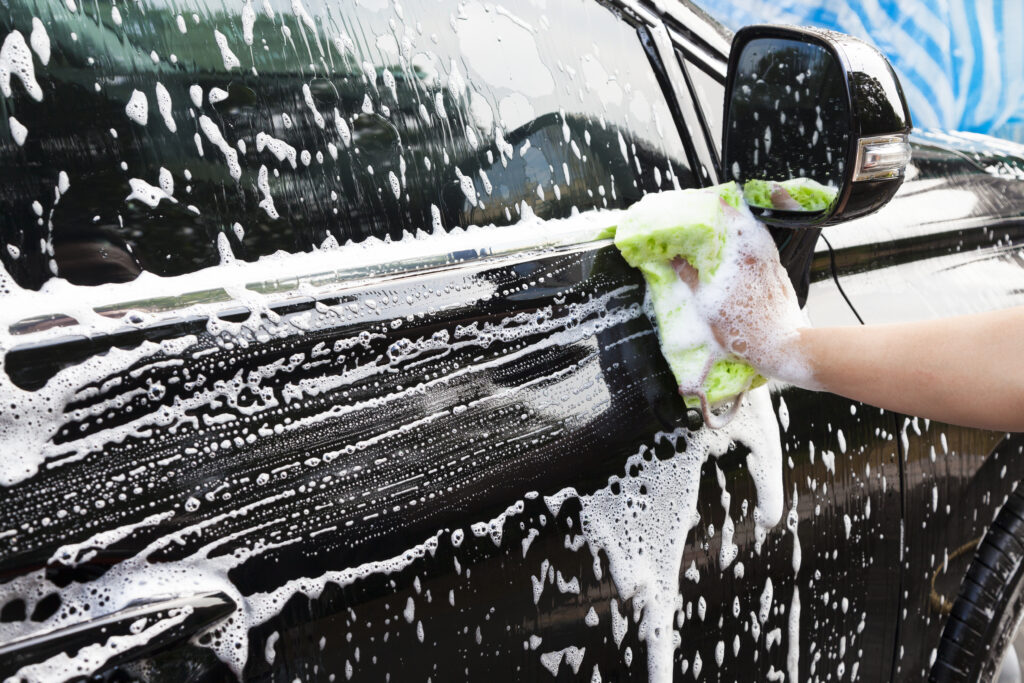When relocating from one area of the country to another, it may be necessary to ship a car to the new destination. Vehicles must be prepared for shipment to ensure safe and expedient arrival. In the process of getting ready to prepare your car for transport, remember that if done correctly, it can minimize the risk of damage, prevent the theft of valuable personal items, save you money on preventable repairs and help the transportation process stay on a reasonable schedule.
For the best experience possible when shipping a vehicle, follow this step-by-step guide.
Table of Contents
Step 1: Find a Reliable Car Transport Service
Transportation services use trucks to convey vehicles across long distances, and choosing a trustworthy company is essential. This requires some research before shipping a car to find services with reasonable prices and good reputations.
Fortunately, we make identifying a reliable car shipper much easier.
It’s a good idea to ask the shipper if:
• Vehicles are transported in covered or uncovered carriers
• Shipment is door-to-door or terminal-to-terminal
• How long the shipment process typically takes
Door-to-door service is the most convenient, since this brings the vehicle directly from one home to another. However, the cost of transportation may be lower if the car is driven to and shipped from a dedicated terminal. Expect shipment to take up to two weeks for long-distance moves.
Also ask if an upfront deposit is required or if the car transport service collects full payment upon delivery of your vehicle.
Step 2: Ask About Insurance
Although a good transportation company should do everything possible to protect vehicles while in transit, unexpected damage may still occur. Having insurance coverage during transportation helps offset the cost of repairs.
Contact the insurance company where current policies are held, and inquire whether the coverage will be active while the vehicle is being moved. Also check to see what kind of insurance the transportation company carries and how much coverage is available. Ask to see their insurance certificate for confirmation.
If there isn’t enough insurance coverage to provide peace of mind when shipping a car, look into purchasing additional coverage through the insurance company or from the transport service. Knowing the full value of the vehicle and common damage occurring during shipping can help determine the amount of extra coverage to be purchased.
Step 3: Clear Out the Junk
Keeping personal items in a car during shipment can cause problems ranging from damage to theft. It’s best to take extra time to clear out valuables before handing the vehicle off to the truckers coming to pick it up.
Some vehicle transportation services won’t ship cars with belongings still inside. Others allow items up to a certain weight to be stored in the trunk or inside the car as long as nothing is easily visible through the windows. However, to prevent the company from refusing to move the vehicle, items should be cleared out and transported another way. Cleaning out unnecessary junk also discourages theft and prevents unwanted damage.
In addition to garbage and personal electronics, these items should be taken out of the car:
• Aftermarket upgrades
• Custom alarm systems
• Mounted GPS devices
• Toll passes
If an alarm system isn’t removable, disable it instead. When alarms are accidentally set off during transit, it can delay the delivery of the vehicle.
Step 4: Clean Up the Car
A thorough wash job not only removes dirt, grime and debris from the vehicle but also reveals any existing damage. Once the interior has been cleared of upgrades, devices and junk, break out the vacuum cleaner and the microfiber rags to give it a detailed going-over. Vacuum the seats, clean up the mats and wipe the windows from the inside. Remove any dust or dirt on the dashboard and other interior surfaces. Don’t forget about door jambs, cup holders and the spaces around the tops of the windows.
When the inside of the car is completely clean, move on to the exterior. Give it the same amount of attention as when cleaning it up after a long and messy winter. Use a soft cloth and a soap designed for cars, not an old shirt or towel and dish soap. Remember to clean around the tires and in other often-missed places. Buff the exterior to prevent spots from obscuring any dings or nicks, but skip the wax.
Waxing and shining could make the paint look better than it is, and the car will likely get dirty again when traveling. However, taking time to do a complete wash job by hand before transportation allows for a more accurate assessment of the car’s condition. Of course, you could take your car to a detailing shop if doing this work isn’t your thing.
Step 5: Record Existing Damage
All vehicles have at least a few minor issues arising from regular driving and exposure to weather. It’s easy to overlook these because they’re not as noticeable as more severe damage or because they’ve been present for so long they tend to escape detection. However, failure to pay attention to damage could be a costly mistake if something happens to the vehicle while in the hands of the transport company.
Give the car a careful inspection inside and out. Write down all scratches, dings, scuffs and other types of damage in as much detail as possible. Take pictures to back up these notes with visual proof, and make at least one copy of the snapshots. It’s also important to make note of any known mechanical issues. Before finishing the inspection, write down the odometer reading.
Keep all notes from the examination of the vehicle in a safe place. It may be necessary to refer to them once the car has been delivered and unloaded.
Step 6: Secure Loose Parts or Openings
Vehicles with moving parts or parts with the potential to come loose while in transit need extra attention before the transportation service arrives. Ensuring these parts are secure is necessary to prevent damage to the car and keep other drivers traveling near the transport vehicle safe.
If the car has a convertible top, sunroof or moonroof, these should be held in place so that they don’t slide or spring open. Removable rack or crossbars on the top or rear of the vehicle should also be dismounted and transported separately. Retract any permanently mounted exterior antennas. Take off detachable antennas, and store these in a safe place.
Keep the chance for damage to a minimum by folding in the side mirrors and putting protective covering on fragile fixtures. Consider removing custom parts and reattaching them later to keep them safe and lower the risk of theft.
Step 7: Schedule an Inspection
Before a vehicle is shipped, it needs to be looked over by a knowledgeable mechanic. Hidden, unexpected or unknown issues may be uncovered and can be fixed immediately or handled once the car arrives at its new home.
Any car being transported needs to be operable. If the vehicle doesn’t run, the truckers from the transport service won’t be able to get it on and off the truck. Moving the car requires working ignition, transmission and brakes. The emergency brake should also be in good working order to prevent unwanted movement during shipping.
If the mechanic discovers any leaks, it’s best to have these repaired right away to prevent problems with fluid loss as the car travels. Leaking fluids are not only a nuisance but can also be dangerous and pose a hazard to the driver of the transport vehicle.
Once the mechanic has thoroughly inspected the car, perform an independent check to make sure:
• The battery is fully charged
• All fluids are topped off to the right levels
• Tires are inflated to the proper pressure
• Drain the gas tank down to about one-quarter to lessen the weight of the car while leaving enough fuel for truckers to move the vehicle when necessary.
Should any unusual quirks or issues be discovered during inspection, explain these problems to the car transport company. This way, the truckers know what to expect when handling the vehicle and won’t be held up by unanticipated issues.
Step 8: Find or Get Spare Keys
Keys get lost. It happens. Be prepared.
The truckers working for shipping services need a set of keys to move cars onto and off of transport vehicles. Some cars have spare keys, but others only come with one set. If the latter is the case, duplicate keys should be obtained before the vehicle is moved.
Giving the only set of keys to anyone aside from the main driver of the vehicle, even an employee of a reputable service, means risking loss, theft or something as simple as accidentally locking the keys inside the car. Using a spare set during transport means the driver can keep the originals safe during the move and will have immediate access to the car when it’s delivered.
Step 9: Inspect Upon Arrival
When a vehicle owner decides to ship a car, the process doesn’t end when both arrive at the final destination. The car has just traveled a long distance and may have been loaded and unloaded several times. Damage may occur at any point along the way, and the vehicle must be looked over before the trucker from the transport company leaves.
Retrieve the notes and photos taken before the car was shipped, and repeat the inspection of the entire vehicle, including everything under the hood. Look for anything differing from the initial review, and make clear notes in writing on the bill of lading provided by the transport company. This document should already have a list of any previous damage to or problems with the car, and if the condition has changed, it’s important to report the issue. The insurance provided by the transport company should cover any repairs necessary to return the car to its previous condition.
Getting a vehicle ready for shipping before the transportation service arrives minimizes hassle and keeps the timeline of relocation on schedule. By shipping the car instead of driving it, the process of moving becomes less stressful and more streamlined.
The combination of proper preparation and a reliable transport company means the vehicle should arrive in the same condition it left and be ready to hit the road again in no time.
How to Prepare Your Car For Transport Conclusion
In conclusion, finding a reliable car transport service is a crucial first step when shipping a car. By conducting thorough research, considering prices and reputation, and asking key questions, you can ensure a trustworthy and efficient shipping experience. Additionally, it is essential to inquire about insurance coverage during transportation to protect against any unexpected damage. Clearing out personal belongings from the vehicle prior to shipping is recommended to prevent potential problems and theft.
Cleaning the car inside and out not only enhances its appearance but also allows for a more accurate assessment of its condition. Taking note of existing damage, securing loose parts or openings, scheduling a thorough inspection, and obtaining spare keys are vital preparations to ensure a smooth transportation process. Finally, upon arrival, conducting a comprehensive inspection and documenting any new damage is essential to report to the transport company for appropriate action. By following these steps and working with a reputable transport service, you can minimize stress, maintain the condition of your vehicle, and streamline the process of car shipping.



